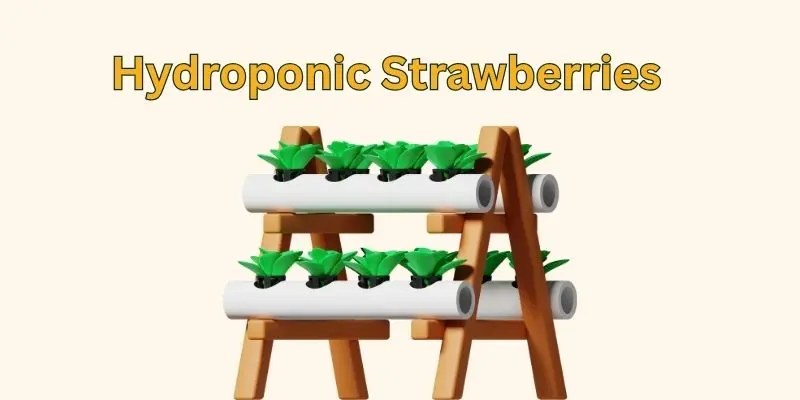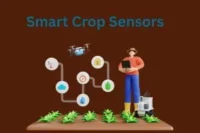How Are Hydroponic Strawberries Grown?
Published: 13 Jun 2025

When I first heard someone mention hydroponic strawberries, I couldn’t help but ask—Wait, strawberries without soil? Is that even possible? Aren’t strawberries the kind of fruit that need a garden bed, sunlight, and lots of care in the dirt? The idea seemed completely unnatural, maybe even a little too scientific. How could something so juicy and delicate grow in just water? And what exactly is hydroponics anyway? If you’re just as unsure as I was, don’t worry—you’re not alone. Let’s unravel this soil-free mystery together.
So, guys, without wasting time, let’s jump into the article to learn the “How Are Hydroponic Strawberries Grown?”
Why Choose Hydroponic Strawberries?
- Grown without pesticides or chemicals, making them safer and healthier
- Cleaner than soil-grown berries — no washing off dirt
- Quicker harvest cycles than traditional methods
- Perfect for indoor and urban settings with limited space
- Saves water and reduces environmental impact compared to traditional farming
What You Need to Get Started
- LED grow lights to replicate sunlight indoors
- Nutrient solution to feed the plants (replaces soil)
- Net pots and grow trays for holding plants securely
- pH and EC meters to monitor water quality and nutrient balance
- Strawberry seedlings or runners as your starter plants
Step-by-Step: How Hydroponic Strawberries Are Grown
- Step 1: Choose your hydroponic system (NFT or Deep Water Culture work best for strawberries)
- Step 2: Place seedlings into net pots with growing medium (such as coco coir or clay pebbles)
- Step 3: Mix your nutrient solution and adjust the pH between 5.5 and 6.5
- Step 4: Provide 12 to 16 hours of light daily using LED grow lights
- Step 5: Monitor the plants regularly, trim runners, and support flower development
- Step 6: Harvest the strawberries when they are red, plump, and fully ripe
Taste the Difference
- Hydroponic strawberries often taste sweeter and more vibrant
- They are free from soil-related diseases and contaminants
- Growing your own fruit creates a deeper connection with your food
- Ideal for health-conscious individuals and families
Common Mistakes to Avoid
- Overfeeding nutrients can burn the plants — always use a TDS or EC meter
- Inconsistent lighting slows growth — consider using timers
- Incorrect pH balance leads to nutrient lockout — test weekly
- Poor air circulation may lead to mold — add a small fan to improve airflow
Ideal Growing Conditions
- Maintain a temperature range of 18°C to 26°C (65°F to 79°F) for healthy growth.
- Keep humidity levels between 60–70% to support fruit development and reduce stress on the plant.
- Ensure good air circulation to prevent mold, mildew, and fungal diseases.
- Use a thermometer and hygrometer to monitor and adjust indoor climate accurately.
Best Hydroponic Systems
- NFT (Nutrient Film Technique): A shallow stream of water flows under the plant roots, offering continuous nutrients.
- Dutch Bucket System: Uses individual buckets for each plant, ideal for larger setups or commercial growth.
- Vertical Tower System: Perfect for small spaces, allowing multiple strawberry plants to grow upward.
- Each system is efficient and soil-free, making them suitable for home or indoor gardening.
FAQs about How Are Hydroponic Strawberries Grown?
Here are some of the most frequently asked questions about the advantages and disadvantages of the Internet.
- Homegrown hydroponic strawberries can sell for a premium price
- Ideal for farmers markets or local organic stores
- A great entry point for small-scale agribusiness
- Customers value fresh, pesticide-free, and locally grown produce
Yes, they can! In hydroponics, strawberries grow in water mixed with nutrients instead of soil. The plants still get everything they need — just in a cleaner, more controlled way.
Hydroponic strawberries are held in small containers called net pots. These are supported by materials like clay pebbles or coco coir, which keep the plants steady.
It may feel strange, but plants don’t care where they get nutrients from — soil or water. As long as they receive the right light, water, and food, they can grow beautifully.
In hydroponics, water is part of the system — it flows or stays under the roots. You just need to keep it clean and full of nutrients; no extra watering is needed.
You can start with small strawberry seedlings or “runners” from a nursery. Just rinse the soil off their roots before putting them into the hydroponic system.
Conclusion:
Hydroponic strawberries are grown without soil by using nutrient-rich water and controlled environments to support healthy, fast growth. The process involves choosing the right hydroponic system, using proper lighting, monitoring pH and nutrient levels, and starting with clean, healthy seedlings. These strawberries often grow faster, taste sweeter, and are cleaner than soil-grown ones. Understanding how they’re grown is important for anyone interested in sustainable farming, indoor gardening, or starting a small-scale food business. It helps beginners make informed decisions and avoid common mistakes while enjoying the benefits of soil-free gardening.

- Be Respectful
- Stay Relevant
- Stay Positive
- True Feedback
- Encourage Discussion
- Avoid Spamming
- No Fake News
- Don't Copy-Paste
- No Personal Attacks

- Be Respectful
- Stay Relevant
- Stay Positive
- True Feedback
- Encourage Discussion
- Avoid Spamming
- No Fake News
- Don't Copy-Paste
- No Personal Attacks





